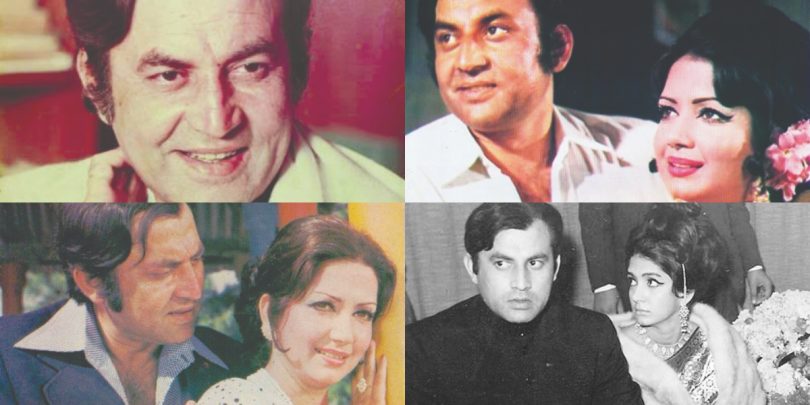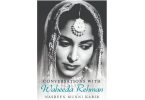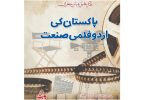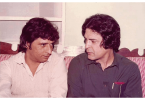Synopsis
Fans of Pakistan’s legendary actor will celebrate his death anniversary on 19th March
Karachi: Calling Muhammad Ali Pakistan’s first complete superstar wouldn’t be an understatement, for he entered filmdom as an antagonist, but made it big as a protagonist who always did the right thing. From his first film till his last, he ruled the hearts of cinemagoers wherever the Urdu language was spoken or understood. Although he was actively involved in films from 1962 until 1989, his impact was such that every actor who came after him, tried to emulate him in their own way.
Long before Amitabh Bachchan played the angry young man in Bollywood, Muhammad Ali had been there and done that. No one could match his steps during the first decade of his career, and the songs Ahmed Rushdi sang for him are proof of that. He had no match when it came to dramatic scenes, but that didn’t mean he wasn’t at ease with comedy – he excelled in that as well, whenever he was given the chance.
The veteran actor, who passed away on 19th March 2006, just one month before what would have been his 75th Birthday, is remembered every year on this date. Let’s take a trip down memory lane to trace Muhammad Ali’s ascent from a radio broadcaster to a screen legend, how he led a successful life with his wife Zeba Begum, and discover why he remained the eternal Bhai of everyone who met him.
Phase One: Entering the film industry
Muhammad Ali was destined to be a star, long before he entered the film industry. After completing his studies, he followed his elder brother Irshad Ali to Radio Pakistan, where Z A Bukhari, the then Director-General of Radio Pakistan mentored him but not before he proved his mettle as a broadcaster.
Born on April 19, 1931, in the Indian city of Rampur, his family moved around before settling in Multan after Independence. However, Hyderabad suited the younger Muhammad Ali who after completing his graduation from City College, Hyderabad, joined Radio Pakistan in 1956. Since he was Z A Bukhari’s protégé, he learned the tricks of the trade from the master, and by the time Fazal Karim Fazli offered him his first film role in Chiragh Jalta Raha, the young Ali had polished his acting as well as his vocals to suit films.
Contrary to popular belief, Muhammad Ali played the villain in his very first film and continued to do so in films where stars like Darpan (Bahadur) and Syed Kamal (Daal Mein Kaala, Dil Ne Tujhe Maan Lia), and newcomers like Waheed Murad (Kaneez) played the main lead. Despite being tall, broad, and handsome, the filmmakers of the day used his towering personality to their advantage, and while he always lost to the hero, he was emerging as the Angry Young Man in his own way.
Phase Two: Becoming the leading ‘leading man’
Had it not been for director Rafiq Rizvi, Muhammad Ali would have continued to play the bad guy in films. Through Shararat, he switched to the right side of the law and continued to play the good guy in most of his films. Although Khamosh Raho and the song Main Nahin Manta cemented his place as the anti-hero, he took a liking to play the guy who is cheered by the audience and kept on getting cheered, be it in an action flick, romantic movie, or a dramatic one.
When he was doing an action flick, the cine-goers felt as if they were fighting on screen; when he was romancing the heroine, they cheered his antics but he was at his best when being dramatic, and for that, he earned the title of Shahenshah-e-Jazbaat, The Emperor of Emotions. He used all his training at the Radio Pakistan to modulate his vocals in such a manner that the cine-goers felt his character’s pain, and at times literally cried while watching his performance.
From the mid-60s to the mid-70s, Muhammad Ali kept playing the leading man, despite the emergence of Waheed Murad and Nadeem as competitors in the late 60s, and Shahid and Ghulam Mohiuddin in the early 70s. They were good actors in their own right but always looked up to Ali Bhai for advice, for he was the go-to guy for everyone who entered the industry.
Muhammad Ali relished the chance of playing historical, biographical, and patriotic characters; he played both Haider Ali and Tipu Sultan in films, while his portrayal of a dacoit in Aag Ka Darya sent shivers down the audience’s spine. Although comedians Moin Akhtar and Umer Sharif made fun of Muhammad Ali’s dialogue delivery in their acts, it was this style that was copied by the youth, as well as his contemporaries when they wanted to appeal to the audience.
Although Muhammad Ali and Zeba made their film debuts together and worked in a few films like Kaneez, no one knew that they were romantically involved, until the two married in 1966. At that time, Zeba and Waheed Murad were the hit couple and their film Armaan became the first Pakistani flick to achieve Platinum Jubilee. However, Ali-Zeb got married in 1966 and launched their production company Ali Zeb Productions which produced two back-to-back hits Aag and Jaise Jante Nahin.
Muhammad Ali’s career was on the rise when colour replaced black and white and he was amongst the first Pakistani actors to film multiple songs in Europe, most notably in front of the Eiffel Tower, and the Botanical Gardens in Paris. The filmmakers of Mere Humsafar used his tough-guy image to their advantage and cast him as a spy aka James Bond, and he romanced with Shabnam, and beat the hell out of the bad guys at the same time.
Phase Three: Taking a leap of faith
He continued to deliver hits during this phase of his career and formed romantic pairs with his wife Zeba, Shamim Ara, Deeba, Rani, and Mumtaz, and worked with nearly all the directors of his time. With Waheed Murad and Nadeem, he acted in as many as three films ¬– Shama, Jab Jab Phool Khile, and Phool Mere Gulshan Ka – whereas kept playing the main lead in Humraz, Saiqa, Insaan Aur Aadmi, Aas, Aaina Aur Soorat, and Pakistan’s first art film Neela Parbat.
At a time when Pakistani films were doing well in cinemas, and he had no equal, Muhammad Ali took a giant leap of faith and decided to play character roles for a change. He had already practiced the act off-screen where he was everyone’s mentor, but on screen, he played the elder brother to most of the actors of his generation. From Waheed Murad to Nadeem, Shahid to Ghulam Mohiuddin, or any of the actresses he romanced with, he was there mostly as the righteous elder brother who did no wrong.
With Muhammad Ali excelling as the elder brother, a fatherly role wasn’t far away, and with Nazrul Islam’s Amber, he played Nadeem’s rigid father who hated his son whose birth resulted in his wife’s death. He continued to play elderly characters in Awaz and Gherao where Waheed Murad was his son, in Aag Aur Ansoo where Ghulam Mohiuddin and Talat Iqbal were his sons, and Salakhein where Babra Sharif played his daughter.
The buck didn’t stop here, for Muhammad Ali managed to stay relevant when younger actors came to the scene and continued to act in films even if it meant choosing quality over quantity. His performance in Bobby (and Doorian) was so perfect that a Special Nigar Award had to be given to him for his ‘super performance’, which was great for someone who played a supporting character in the films.
Phase Four: Making Pakistan proud, the world over!
When he was a younger man, he danced his heart out in films in his unique style; when he chose character roles, he excelled in them, and when he played the bad guy, he was the meanest person on the screen. However, that didn’t stop Muhammad Ali from boldly going where no one had gone before, and when the opportunity came his way, he grabbed it with both hands.
It so happened that when the son of Rafiq Rizvi – Saeed Rizvi – decided to make Pakistan’s first science fiction film Shaani, he approached Muhammad Ali to play the village elder in the movie. In reply, Muhammad Ali chose to work in the film for free, and repay the son for his father’s generosity. The film not only became a hit when it was released in 1989 but also introduced Muhammad Ali to the younger generation who loved his progressive approach in the movie.
Alongside Shaani came Indian actor/director Manoj Kumar’s Clerk that gave Muhammad Ali the chance to work alongside his idol Ashok Kumar, who played the father to both Manoj Kumar and Muhammad Ali. He went to Bollywood with his wife to strengthen the relations between the two countries on the insistence of then-President Zia ul Haq and won everyone over with his loving nature and charming personality. When a TV show was held in his honour in the new millennium, famous actors from across the border including Sunil Dutt, Randhir Kapoor, Sunil Shetty, and others praised Muhammad Ali and paid him tribute in their own manner.
Muhammad Ali might have been known for his dialogue delivery but he wasn’t far behind when it came to songs that were picturised on him. Most of the famous songs from the 1960s and 1970s had him on the screen, lip-syncing to either Ahmed Rushdi or Mehdi Hassan. His most famous numbers include Main Nahi Manta (Khamosh Raho), Tum Hi Ho Mehboob Mere (Shararat), Yun Zindagi Ki Raah Main (Aag), Aise Bhi Hain Meherban (Jaise Jante Nahi), Jab Koi Pyar Se Bulayega (Zindagi Kitni Haseen Hai), Ranjish Hi Sahi (Mohabbat), Waada Karo Milogay (Mere Humsafar), Thehra Hai Samaa (Amber), and Tere Mere Pyar Ka (Salakhein).
After winning at least 10 Nigar Awards in his career, the Pride of Performance Award, and the Tamgha-e-Imtiaz, Muhammad Ali gradually left films in the late 1980s and did a handful of films in the 1990s, with his last film Dum Mast Qalandar releasing in 1995. He worked in over 100 films during his career where he played all kinds of characters.
Muhammad Ali devoted the last two decades of his life to social work and founded the Ali-Zeb Foundation to help Thalassemia patients. His death on 19th March 2006 not only saddened his friends and family but also the countless fans who loved his charisma, his demeanor, and his ability to make them cry with his brilliant performances on screen.







